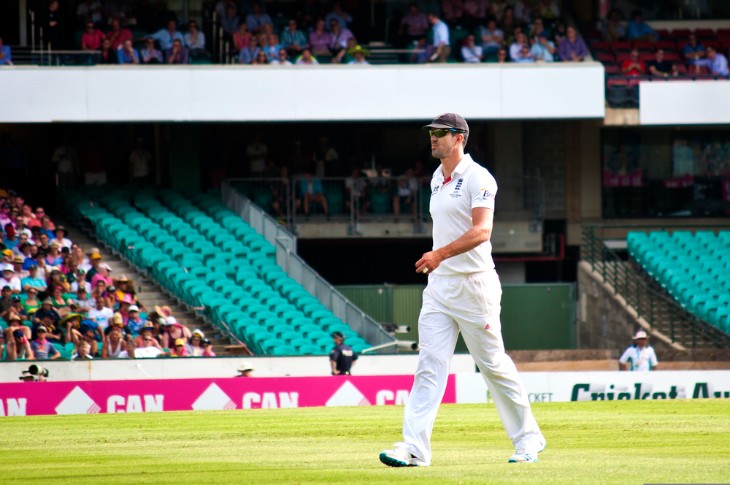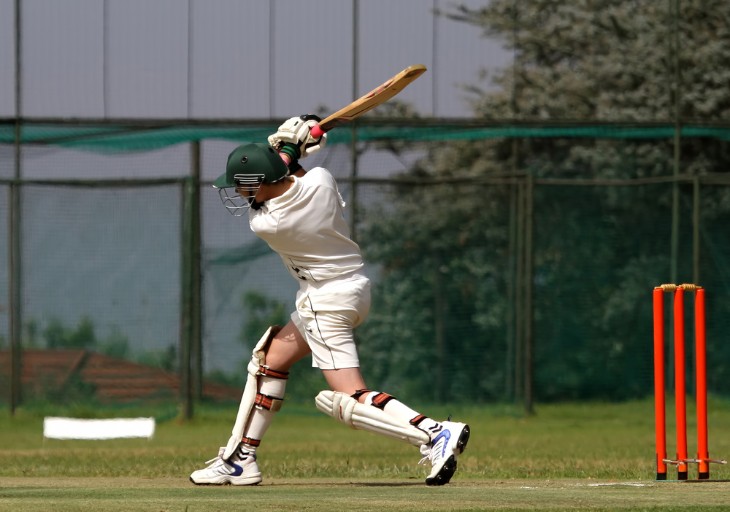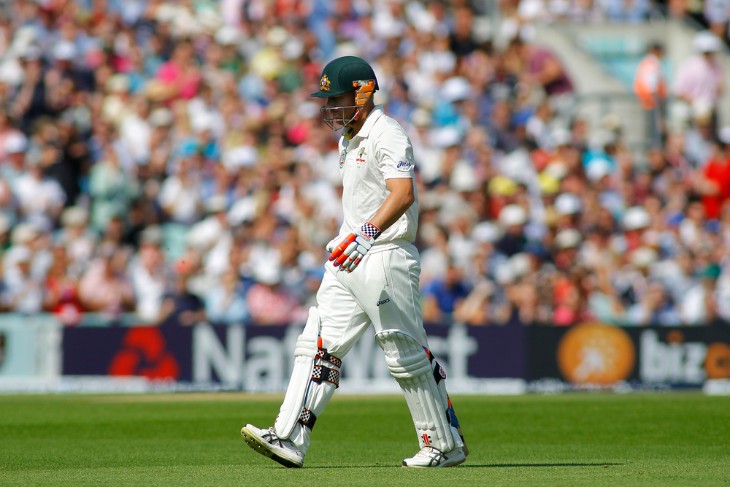Cricket, a quintessentially British sport, has seen significant changes in its uniforms over the years. In this article, we'll delve into the historical journey of cricket attire, exploring its transformation from its inception to the modern-day kits. The evolution of cricket uniforms is a fascinating reflection of changing times, technologies, and cultural influences.
The Origins of Cricket Uniforms
Cricket, with its centuries-old history, has not only evolved as a sport but also in terms of the clothing worn by its players. The attire worn by cricketers has transitioned from humble beginnings to highly technical and stylized outfits. This transformation mirrors not only advancements in textile technology but also the shifting cultural and societal norms.
The earliest cricket matches, dating back to the 16th century, saw players wearing clothing that was far from what we consider a uniform today. Instead, cricket attire in its infancy was an eclectic mix of whatever the players had at hand. This meant that cricketers often wore their everyday clothing, which was typically comfortable but hardly uniform in the modern sense.
In these early days, cricket was largely an amateur sport played by the gentry, and players would wear their regular clothes, which were not standardized for the game. Trousers, waistcoats, and shirts were the norm, and the only consistency was perhaps the white or off-white colours to maintain a certain level of decency on the field.
Early Cricket Attire
The transition from haphazard clothing to more formal cricket attire began in the 18th century. During this period, the sport gained popularity across England and beyond, and cricket clubs started to emerge. With the formation of clubs, there arose a need for a standardized dress code to distinguish teams and players.
The first step towards uniformity was the adoption of white clothing. White, being a practical choice, was less likely to show dirt or stains during extended matches. This marked a significant shift towards recognizably consistent attire for cricketers.
Shirts, trousers, and tailored coats became common elements of early cricket uniforms. The shirts were typically long-sleeved, and trousers were worn high-waisted. Headwear was also introduced, with players opting for a variety of styles, including caps and straw hats, depending on personal preference.
The Evolution of Fabrics
As cricket continued to grow in popularity, so did the demand for more functional and comfortable clothing. One of the most notable developments during this period was the transition from heavy, natural fabrics to lighter, more breathable materials.
Cotton and linen were the primary fabrics used in early cricket attire. While they were comfortable, they had their limitations, especially in wet or humid conditions. These fabrics tended to become heavy and less comfortable as they absorbed moisture.
The mid-19th century saw the introduction of flannel, a fabric that offered improved moisture-wicking properties. This change allowed players to remain more comfortable during matches, even in adverse weather conditions.
With the advent of the 20th century, the use of synthetic fabrics like polyester and nylon began to revolutionize cricket uniforms. These materials not only enhanced comfort but also made uniforms more durable. Additionally, synthetic materials offered better moisture management, keeping players dry and comfortable on the field.

Cricket Uniforms in the Victorian Era
The Victorian era, known for its strict social norms and adherence to propriety, had a notable influence on cricket uniforms. During this period, cricket attire became more formal and dignified, reflecting the broader cultural and societal values of the time.
Players began to wear tailored blazers and flannel trousers, adorned with club insignias and badges. This marked the emergence of a more structured and recognisable uniform, often accompanied by the traditional cricket cap.
White continued to be the dominant colour, symbolising purity and virtue as per Victorian sensibilities. Players adhered to a certain decorum and propriety in both their on-field conduct and attire. The adoption of such formal attire was a clear reflection of the respectability expected from Victorian gentlemen.
The Impact of World Wars
The two World Wars of the 20th century had a significant impact on cricket uniforms. During both conflicts, resources were redirected towards the war effort, affecting the production of textiles and materials. As a result, cricket uniforms saw alterations and adaptations to accommodate the wartime constraints.
Wool, a staple fabric for cricket attire, faced shortages during the wars. This led to the use of alternative materials such as rayon and other blends. The uniforms became more functional, with a focus on durability and resource conservation.
Furthermore, the wars disrupted international cricket matches, as players and resources were diverted to the war fronts. This had a lasting influence on the game, including the evolution of cricket uniforms. The uniforms began to adapt to the changing times, reflecting the resilience and adaptability of the sport during challenging periods in history.
The Transition to Colour
The mid-20th century marked a significant shift in cricket uniforms as they gradually embraced colours. The traditional all-white attire gave way to the introduction of coloured clothing, particularly in limited-overs formats of the game.
The adoption of colour brought a new level of excitement and visibility to cricket matches. It allowed teams to be easily distinguishable, especially in one-day matches, where quick identification of players became crucial. Team logos, sponsorships, and branding also began to find their place on the clothing, reflecting the changing commercial landscape of the sport.
The transition to coloured uniforms was not without its challenges. Traditionalists initially resisted the change, viewing it as a departure from the game's heritage. However, practicality and the desire to attract a broader audience prevailed, and coloured cricket uniforms became the norm in limited-overs formats.
Modernisation and Sponsorship
As cricket evolved into a global sport with a massive fan following, it became increasingly commercialized. This shift had a profound impact on cricket uniforms. Sponsorship deals with various brands and companies led to prominent logos and branding being prominently displayed on the clothing.
Cricket uniforms also underwent technological advancements to enhance player performance. Lightweight and moisture-wicking fabrics became standard, ensuring players remained comfortable and focused during matches. Innovations like compression clothing and specialised footwear further improved athletes' agility and performance on the field.
In the pursuit of modernisation and performance enhancement, cricket uniforms have become highly technical, with considerations for breathability, moisture management, and even biomechanical support. Today's cricket kits are a blend of tradition and innovation, reflecting the sport's rich history and its continuous drive towards excellence.

Technical Advancements
The evolution of cricket uniforms has seen a parallel progression in technology. In recent decades, materials and design have taken center stage, enhancing both comfort and performance on the cricket field.
One significant development has been the use of moisture-wicking fabrics. These fabrics efficiently draw sweat away from the skin, helping players stay dry and comfortable during intense matches, even in hot and humid conditions. Ventilation panels have been strategically incorporated to further aid in temperature regulation.
Compression clothing is another innovation that has found its place in cricket attire. It provides support to the muscles, reducing fatigue and aiding recovery during long matches. Compression sleeves and shorts have become common additions to the modern cricket kit.
Footwear, too, has seen a transformation. Specialised cricket boots with spiked soles offer players the necessary grip and stability on the pitch. These boots have evolved to cater to different playing conditions, with options for grass, synthetic surfaces, and indoor cricket.
Overall, the technical advancements in cricket uniforms have not only improved player comfort but have also contributed to better on-field performance. The modern cricket kit is a testament to the marriage of sportswear technology with the demands of a highly competitive game.
The Role of Cultural Influences
Cricket is a global sport, and as such, its uniforms have been influenced by a diverse range of cultures. The designs, colours, and styles of cricket attire often reflect the heritage and identity of the teams and nations they represent.
For instance, the West Indies cricket team's distinctive maroon clothing pays homage to the rich cultural history of the Caribbean. Similarly, the Indian cricket team's vibrant blue and the Pakistan cricket team's green are emblematic of their respective national identities.
Cultural influences extend beyond aesthetics. Traditional practices, such as the Indian team wearing a symbol of the BCCI (Board of Control for Cricket in India) on their jerseys, underscore the deep-rooted connection between cricket and national pride.
Icons and Innovations
The world of cricket uniforms has witnessed its fair share of iconic moments and innovations. These instances have left an indelible mark on the sport and continue to shape the way we perceive and design cricket attire.
One of the most iconic moments in cricket uniform history occurred in the 1970s when Australian cricketer Dennis Lillee wore a distinctive, aluminium-brimmed cricket hat, commonly referred to as the "helmet." This innovation revolutionized headgear in cricket and significantly improved player safety. Today, helmets are standard equipment, protecting players from fast-paced deliveries.
Another notable innovation was the introduction of fluorescent cricket balls for day-night matches. To ensure visibility, players adapted their uniforms to include fluorescent clothing elements, such as coloured trousers and sleeves. This innovation not only enhanced the spectacle of the game but also contributed to its popularity.
In recent years, uniform innovations have also included player-specific features. For example, some bowlers opt for long-sleeved shirts with a specialized grip surface to aid in gripping the ball. Batsmen have experimented with modified shirts featuring extra padding to protect against body blows. These innovations highlight the sport's continuous quest for improvement and player well-being.
Conclusion
The evolution of cricket uniforms is a journey through time, reflecting the changing needs, technologies, and cultural influences that have shaped the sport. From the humble beginnings of white clothing to the technical marvels of modern kits, cricket attire has come a long way.
As we conclude our exploration of the evolution of cricket uniforms, it is evident that cricket's rich history and global appeal have left an indelible mark on the clothing worn by its players. The fusion of tradition and innovation, comfort and performance, makes cricket uniforms a testament to the ever-evolving nature of the sport.
For more information:


